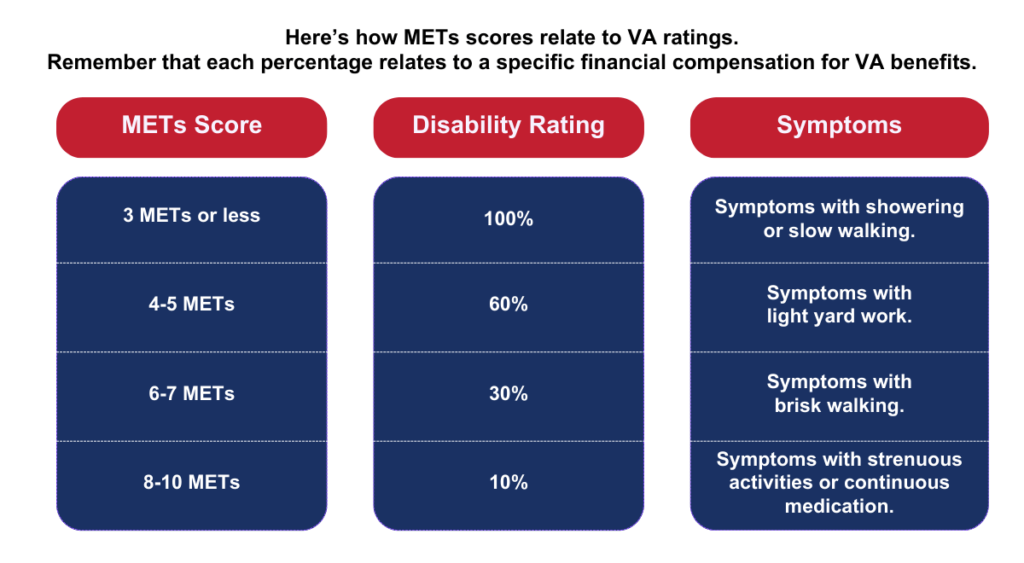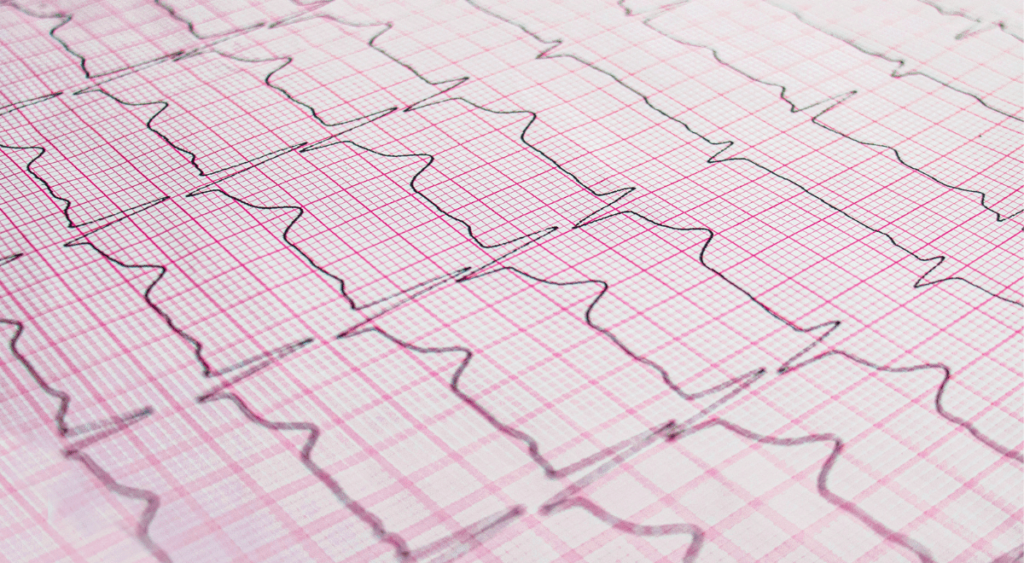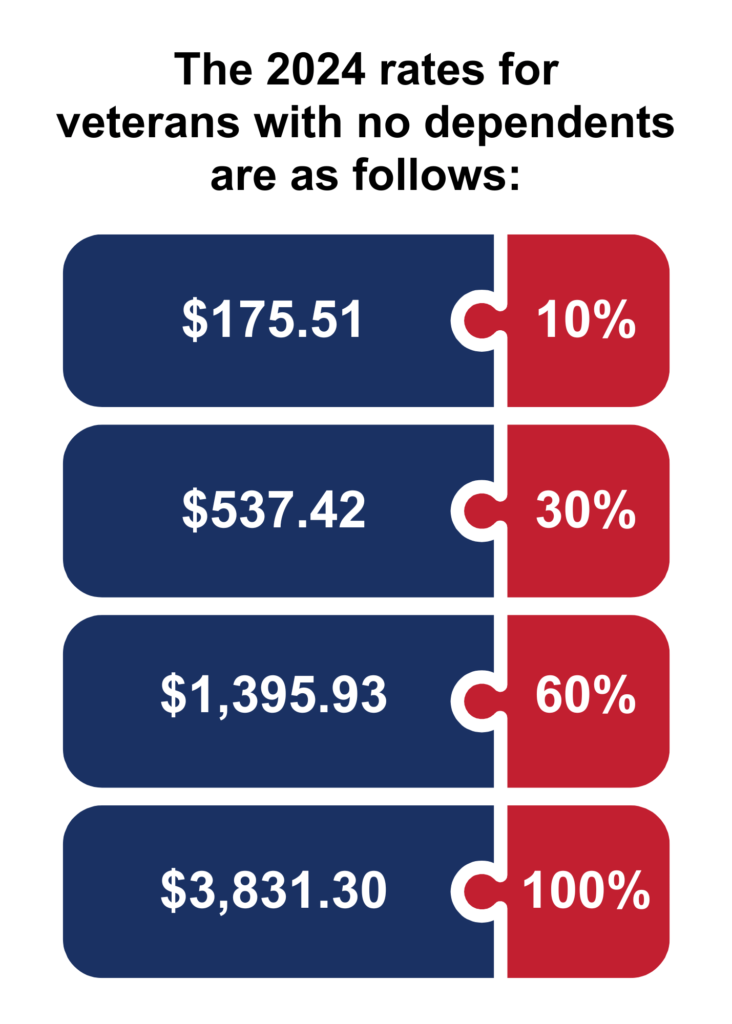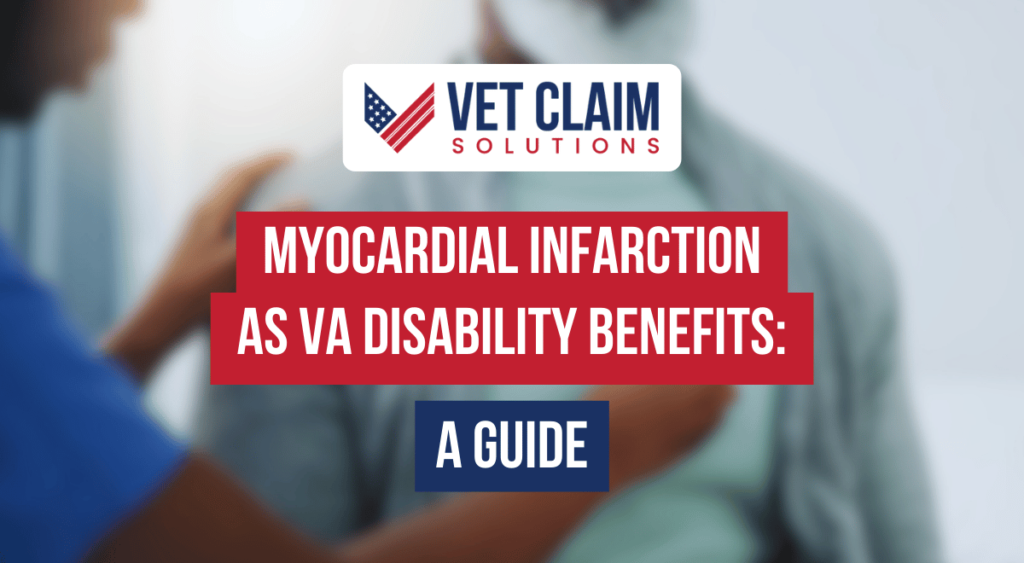Heart attacks are life-altering, especially for veterans. Myocardial infarction as a VA disability benefit is crucial for those facing cardiovascular challenges. Understanding how the VA evaluates and compensates for heart conditions can greatly improve a veteran’s well-being and financial stability.
Navigating VA disability benefits can feel overwhelming. Knowledge is power when claiming benefits for a myocardial infarction. Whether you’re a veteran or helping a loved one, understanding how the VA handles heart attack cases is essential. The percent disability rating could be important.
A myocardial infarction’s impact goes beyond the immediate emergency. It can create long-term health complications and limit a veteran’s ability to work. The VA recognizes heart conditions, including myocardial infarction, as service-connected disabilities. This could make veterans eligible for disability compensation.
Understanding Myocardial Infarction and Its Impact on Veterans
A myocardial infarction, or heart attack, happens when blocked blood flow damages heart muscle. Veterans’ military service might amplify heart disease risk factors. Understanding myocardial infarction as a VA disability benefit becomes critical.
The Prevalence of Heart Disease Among Veterans
Heart disease is a serious concern for veterans, especially those over 50 who are at a higher risk. The Centers for Disease Control and Prevention (CDC) states it’s the leading cause of death in the U.S. Heart disease accounts for one in four deaths.
Studies show veterans over 50 are more prone to heart disease over 20 years than others in their age group. Understanding myocardial infarction as a VA disability benefit is critical for those who served. This increased risk underscores the importance of VA benefits for veterans who develop heart conditions.

Risk Factors Unique to Veterans
Veterans face unique heart disease risk factors due to military service. This could develop heart conditions from their time in service. They may develop a heart condition as a result of the below factors.
- Exposure to environmental hazards.
- Post-traumatic stress disorder (PTSD).
- Physical strain from combat or training.
- Agent Orange exposure (for Vietnam War veterans).
These factors contribute to developing heart conditions. Myocardial infarction as a VA disability benefit is crucial for these veterans. Veterans might also consider seeking treatment records from when they served, to prove their heart condition originated in the military.
Establishing Service Connection for Myocardial Infarction
Veterans must establish a service connection for myocardial infarction to receive VA disability benefits. This involves showing how their heart condition is related to their military service. There are a couple different ways to do so.
Direct Service Connection
A direct service connection needs three elements. It is one way to receive VA benefits.
- Current heart condition diagnosis.
- In-service event or illness relating to heart health.
- Medical nexus connecting the current condition and in-service event. Your treatment records could be helpful for establishing service connection.
Veterans can provide documentation. Examples include medical records, service records, and personal statements. Others can write statements too. These include family, friends, or fellow service members. A higher disability rating may be given based on your evidence and what the C&P examiner writes down in the C&P exam results. The exam is a Compensation and Pension Exam done by a C&P examiner.

Presumptive Service Connection
The VA presumes service connection for some conditions. This means there are certain conditions the VA assumes are connected to your military service, making the connection easier. For example, ischemic heart disease after Agent Orange exposure may get presumptive service connection. A disability benefits questionnaire could ask questions about Agent Orange.
As of 2010, a regulation linking Agent Orange and ischemic heart disease exists. It helps affected veterans get benefits. Presumptive service connection makes establishing service connection for MI more efficient. Many times, ischemic heart disease could lead to a heart attack.
Secondary Service Connection
Secondary service connection can help some veterans. If one service-connected disability caused another, it is considered a secondary condition. An example of an eligible secondary condition is hypertension hypertension.
A veteran with service-connected diabetes who later develops heart disease may be eligible. The same may be true for veterans with PTSD. This includes veterans whose heart condition is a result of high blood, because PTSD caused that to occur. They may qualify for a secondary service connection.
How the VA Rates Myocardial Infarction
Veterans must understand VA heart condition ratings. It’s essential when seeking disability benefits for myocardial infarction. Specific criteria determine heart condition ratings. Disability benefits often hinge on this crucial factor.
The VA Schedule for Rating Disabilities
The VA uses the VA Schedule for Rating Disabilities. This includes diseases of the heart, arteries, and veins (codes 7000-7124). A myocardial infarction usually falls under code 7006. Blood flow issues may be included in code 7006.
METs Testing and Heart Ratings
The Metabolic Equivalent of Task (METs) score factors heavily into heart condition ratings. METs scores determine how much exertion causes symptoms like shortness of breath or chest pain. Service connection establishes the condition’s origin in service, but METs quantify functional limitations for benefits eligibility.

These ratings may change with other factors like congestive heart failure or left ventricular dysfunction. The METs level is determined via an interview-based METs test. The METs score obtained determines the disability rating, but additional factors are also considered.
Temporary Total Disability Ratings
The VA assigns a 100% rating for three months after a heart attack, according to diagnostic code 7006. This is for acute myocardial infarction cases. It helps during recovery.
Afterward, there’s a reevaluation. A new rating is based on residual effects and current heart function. Your service-connected condition might result in a lower rating at this point.
Common Secondary Conditions Associated with Myocardial Infarction
Secondary conditions may develop from a myocardial infarction. This is a factor in VA disability benefits. These conditions might increase a veteran’s rating. A secondary disability rating is connected to another service-connected disability.
Congestive Heart Failure
Congestive heart failure sometimes occurs after a myocardial infarction. The heart struggles to pump blood well. This results in fatigue, shortness of breath, and fluid retention. It could include left ventricular hypertrophy.
Veterans with such symptoms should seek medical care and consider additional VA benefits. Additional heart conditions that stem from your main one, which was caused by your military service, is important when considering service connection for the newer heart condition. The new heart condition can be connected due to it being caused by another heart condition that was already connected. Therefore it is not connected to your time in the service directly, it is connected indirectly via an additional heart condition.
Arrhythmias
Arrhythmias (heart rhythm problems) are common post-heart attack. They range from benign to severe. Arrhythmias are rated using several codes. The exact code used depends on type and severity. This means the rating of your condition depends on this factor.
Supraventricular arrhythmias fall under code 7010. Ventricular arrhythmias fall under 7011. Arrhythmias affect how the heart pumps. Sometimes this means blood is not pumped effectively.

Depression and Anxiety
Heart attacks have significant psychological effects. Depression or anxiety often appear after a myocardial infarction. These mental health conditions can be considered secondary conditions to a heart problem. This may increase a veteran’s overall disability rating. Mental health conditions resulting from a physical condition, that originated in service, can be considered service-connected as well.
Cognitive Impairment
Cognitive impairment such as memory loss or poor concentration, can occur after heart attacks. This is caused by reduced blood flow to the brain. These issues may justify additional benefits. These symptoms are additional symptoms related to the impact of MI. These all result from your time in service.

Navigating the VA Claims Process for Myocardial Infarction
Filing for VA benefits for myocardial infarction can be confusing. These steps may help. Receiving your disability benefits is a long process.
- Gather medical evidence. Collect diagnosis, treatment, and care records.
- Get a nexus letter. This medical opinion links the infarction to your service.
- Complete VA Form 21-526EZ (Application for Disability Compensation). This form contains various personal and medical information related to your service-connected conditions and your request to receive disability compensation.
- Submit lay statements. These from you, family, friends, or others, provide important context. Conditions may result from these statements being corroborated with medical evidence.
- File the claim. Submit your application and documentation to the VA.
- Attend a Compensation & Pension (C&P) exam. This is to assess your condition’s severity. CAD include exams.
- Await the VA’s decision. Prepare for possible re-filling for VA Claim
Proving service connection can be challenging. Many veterans turn to Vet Claim Solutions for expert assistance.
Compensation Rates for Heart Conditions
Knowing potential compensation is crucial to a myocardial infarction claim. The awarded rating determines this amount. This will be based on your disability rating.

Having dependents increases these rates. Other benefits, like Special Monthly Compensation, might apply too. The exact dollar amount is tied to the percentage of disability you are assigned.
Special Considerations for Heart-Related Disabilities
Here are important things to know regarding myocardial infarctions and benefits.
Implanted Cardiac Devices
Those with pacemakers or ICDs due to a service-connected heart condition may qualify for extra benefits. A temporary 100% rating applies for one month post-implantation (code 7018). If a veteran has service-connected heart issues, and thus requires a heart valve, this is an example where their disability compensation could be affected. A physical activity and quality of life assessment is an integral component of the overall evaluation, and the impact of the valve is factored into that assessment. So is hypertension.
Heart Valve Replacement
The VA grants a 100% rating for an indefinite period after a service-connected prosthetic heart valve replacement. This applies to conditions under diagnostic code 7016. Having a prosthetic heart valve put in due to service, could get you increased benefits. Service connection can change due to this factor.
Coronary Bypass Surgery
A temporary 100% rating is awarded for three months after bypass surgery. This applies if surgery treats a service-connected condition (code 7017). Coronary artery issues can be extremely serious, and bypass surgeries may have some serious ramifications. A family history of artery issues might be an indicator of this. Many people might have similar experiences to you when it comes to coronary bypass surgery. Bypass surgeries happen all over the US, many by expert surgeons.
The Importance of Ongoing Care and Documentation
Ongoing care and good records are key with myocardial infarction as a VA disability benefit. Check-ups and tests help health and provide proof. Good record keeping helps manage and/or increase ratings. The percent rating could increase as your condition worsens.
Regular Medical Appointments
Attend all appointments and follow treatments. This records issues and treatments. These records become very important when filing VA Claims. You will need sufficient medical evidence when trying to get your condition increased in rating, whether it is physical or psychological. These appointments provide sufficient medical documentation.

Keeping Personal Records
Log your symptoms, medicines, and how your condition affects you daily. This can greatly help your communication. Good communication with providers and VA representatives is important. Good documentation is a major factor that plays into ratings.
Reporting Changes in Condition
Report worsening conditions to the VA right away. A higher rating may be warranted. Service-connected conditions don’t go away. If it is a temporary condition and will end in time, it must be documented in treatment records in order to no longer be compensated for.

Conclusion
Navigating a myocardial infarction (heart attack) claim can be challenging, but understanding the process helps veterans secure the compensation they deserve. Every step—from establishing service connection to determining ratings—matters.
A VA disability rating isn’t just about financial benefits; it’s about recognizing the sacrifices veterans have made and ensuring they receive proper care and support. If you’ve developed a heart condition, document it thoroughly—your disability rating may depend on it.
If you’re struggling with your claim or feel your rating is incorrect, turn to Vet Claim Solutions for expert guidance. Our team helps veterans navigate the VA system and ensures they receive the benefits they’ve earned.
Many veterans deal with heart conditions—be prepared for the METs test, which measures how your heart pumps under physical stress. If your ejection fraction drops significantly, make sure it’s properly documented to strengthen your claim direct service connection


